Eriu: Powerful Irish Goddess And Sacred Uisneach Hill Where She And God Lugh Are Buried
A. Sutherland - AncientPages.com - Eriu (also known as Éire or Erin), was the Irish goddess of earth, according to ancient beliefs.
In ‘The Book of Invasions’ (or the “Book of Conquests”), the 11th-century work based on poems, narrative prose, and oral traditions related to the legendary history of Ireland, is written that Eriu and her two sisters, Banba, Fótla were a trio of queen-goddesses.
During the Milesian Invasion, the sister-goddesses were married to the three Danaan kings of the Tuatha Dé Danann: Mac Grené (‘Son of the Sun’), Mac Cuill (‘Son of Hazel’), and Mac Cécht (‘Son of the Plough’).
The three Danann kings were grandsons of the Dagda, god of life and death and chief of the Tuatha De Danann.
At different times, each of the names of the three sister-goddesses (Banba, Fótla and Eriu) have been applied to Ireland, of which the last surviving is “Erin” and is related to Eriu, a member of the Tuatha de Danann, Ireland's original gods.
Along with her two sisters, Eriu was the Irish goddess of sovereignty. Her name has often been associated with soil, earth, and the land of abundance.
Arrival Of The Milesians
The “Book of Invasions” says that the Milesians, the last mythical invaders of Ireland and the true Gaelic people of Ireland, arrived on Ireland’s shores. Shortly after their arrival, they met three sisters, all goddesses of the land, each of whom asked that the island be called after her. The sorceress Banba made her demand from the top of her favorite mountain and so did Fódla, when the invaders approached her mountain. Finally, the Milesians met the glorious Eriu who greeted them at the sacred mountain, Uisneach.
She made the same demands as her sisters but promised much more than Banba and Fódla did.
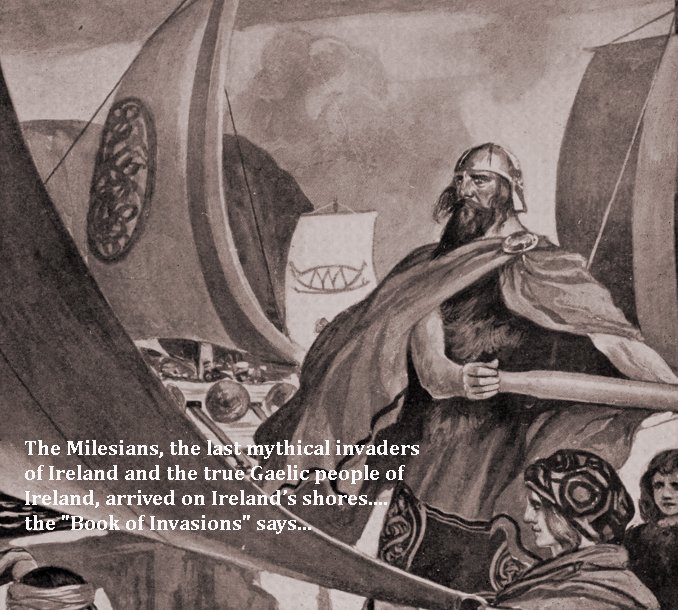
"The Coming of the Sons of Miled", illustration by J. C. Leyendecker in T. W. Rolleston's Myths & Legends of the Celtic Race, 1911
The Milesian chief decided to call the island after Eriu, whose prophecy she proclaimed was the most favorable.
Legend has it that the names of her two sisters were occasionally used as poetic names for Ireland.
Eriu Related To Different Deities
In different texts, Eriu is associated with the Fomorians, the great god Dagda, and Lugh, one of the greatest heroes. Eriu fell in love with a Fomorian king named Elatha, the son of Fomorian Delbáeth (son of Neit). Most Fomorians were usually very ugly and deformed, but Elatha was a handsome man.
It is said that Elatha seduced Eriu, and she became the mother of their son, Bres. Elatha gave her a ring so that he would later recognize his own son, who became the half-Fomorian king. It is also believed that Eriu was the lover of the hero Lugh.
Powerful Divine Eriu Controlled Lands And Seas
In ‘The Encyclopedia of Celtic Mythology and Folklore’, Patricia Monaghan mentions one legend about the invasion of the Milesians and a man, Donn mac Miled, also known as Éber Donn ("Dark or Brown Éber"). The man was a malevolent and envious figure who, at the meeting between the Milesians and the goddess Eriu, replied to Eriu's demands with insults. Eriu responded to his humiliations and calmly sentenced him to death.
He drowned shortly thereafter.
The Hill of Uisneach, Eriu's Divine Place
The place is considered to be a mythological and sacred center of Ireland.
Uisneach's most famous feature is the so-called Catstone ("Ail na Mireann"—the stone of divisions). It is also known as 'Umbilicus Hinerniae' -Axis Mundi and the navel of Ireland. Under this sacred stone, Eiru, the powerful goddess of Ireland after whom the country is named, was laid to rest.
The sacred place, also known as ‘Axis Mundi’ and ‘the Naval of Ireland,’ is also the burial site of the famous hero, the sun god Lugh. Historically, Uisneach was believed to be a gate to the mythical fifth province, Mide, which held Ireland's four more familiar provinces together.
Even today, this enigmatic hill, which stands just 596 feet above sea level, is one of the world's most sacred and historic sanctuaries.
Updated on June 23, 2024
Written by – A. Sutherland - AncientPages.com Senior Staff Writer
Copyright © AncientPages.com All rights reserved. This material may not be published, broadcast, rewritten or redistributed in whole or part without the express written permission of AncientPages.com
Expand for referencesReferences:
Sian Echard S, Rouse R, Jacqueline A. Fay J.A, Fulton H. Rector G. The Encyclopedia of Medieval Literature in Britain
Williams M. Ireland's Immortals
More From Ancient Pages
-
 Lost Kingdom Of Cleopatra – Legendary Lost City Of Heracleion
Featured Stories | Apr 1, 2014
Lost Kingdom Of Cleopatra – Legendary Lost City Of Heracleion
Featured Stories | Apr 1, 2014 -
 Spectacular Giant Bronze Age Hall Found Near Berlin, Germany May Be Connected To Legendary King Hinz
Archaeology | Nov 6, 2023
Spectacular Giant Bronze Age Hall Found Near Berlin, Germany May Be Connected To Legendary King Hinz
Archaeology | Nov 6, 2023 -
 Copper: First Metal Used By Ancient Man More Than 10,000 Years Ago
Ancient History Facts | Oct 25, 2016
Copper: First Metal Used By Ancient Man More Than 10,000 Years Ago
Ancient History Facts | Oct 25, 2016 -
 Hindu Monkey God Hanuman May Have Been Homo Erectus – Scientist Says
Hindu Mythology | Mar 3, 2020
Hindu Monkey God Hanuman May Have Been Homo Erectus – Scientist Says
Hindu Mythology | Mar 3, 2020 -
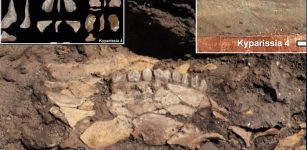 Greek Discovery Of Stone Tools In Megalopolis Area Pushes Back Greece’s Archaeological Record Up To 250,000 Years
Archaeology | Jun 2, 2023
Greek Discovery Of Stone Tools In Megalopolis Area Pushes Back Greece’s Archaeological Record Up To 250,000 Years
Archaeology | Jun 2, 2023 -
 Fisherman Pulls A Viking Sword From The River Cherwell, Oxford, UK
Archaeology | Mar 6, 2024
Fisherman Pulls A Viking Sword From The River Cherwell, Oxford, UK
Archaeology | Mar 6, 2024 -
 Mystery Of Charterhouse Warren’s Early Bronze Age Site Solved By Scientists
Archaeology | Dec 27, 2024
Mystery Of Charterhouse Warren’s Early Bronze Age Site Solved By Scientists
Archaeology | Dec 27, 2024 -
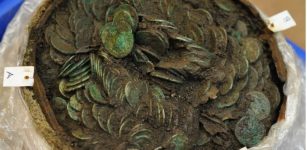 Roman Coin Hoards Found In The Conwy Valley Declared Treasure
Archaeology | Oct 20, 2023
Roman Coin Hoards Found In The Conwy Valley Declared Treasure
Archaeology | Oct 20, 2023 -
 Mystery Of The 2,000-Year-Old ‘Urn Burial’ Ceremonies: 113 Tombs Discovered Near the Ancient City Of Fudi
Archaeology | Oct 11, 2016
Mystery Of The 2,000-Year-Old ‘Urn Burial’ Ceremonies: 113 Tombs Discovered Near the Ancient City Of Fudi
Archaeology | Oct 11, 2016 -
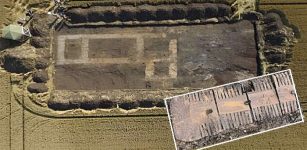 Lincolnshire’s Prehistoric Henge And A Sacred Site Dating Back Hundreds Of Years
Archaeology | Apr 6, 2024
Lincolnshire’s Prehistoric Henge And A Sacred Site Dating Back Hundreds Of Years
Archaeology | Apr 6, 2024 -
 Secret Ancient Knowledge Of Portals Leading To Unknown Realms – Mysteries Of The Past And Present – Part 2
Ancient Mysteries | Dec 7, 2021
Secret Ancient Knowledge Of Portals Leading To Unknown Realms – Mysteries Of The Past And Present – Part 2
Ancient Mysteries | Dec 7, 2021 -
 Five Rare Bronze Age Axe Heads Found In Polish Forest
Archaeology | Dec 8, 2023
Five Rare Bronze Age Axe Heads Found In Polish Forest
Archaeology | Dec 8, 2023 -
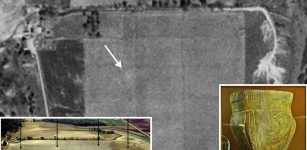 Long-Lost Ancient Burial Mounds Of The Havana Hopewell Culture Re-Discovered In Iowa
Archaeology | Apr 6, 2021
Long-Lost Ancient Burial Mounds Of The Havana Hopewell Culture Re-Discovered In Iowa
Archaeology | Apr 6, 2021 -
 Ancient Mystery Of The Before – Time People – Traces Of An Unknown Lost Race – Part 1
Ancient Mysteries | Apr 3, 2019
Ancient Mystery Of The Before – Time People – Traces Of An Unknown Lost Race – Part 1
Ancient Mysteries | Apr 3, 2019 -
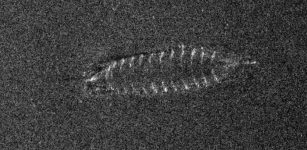 Sonar Images Reveal The Existence Of A 700-Year-Old Shipwreck At The Bottom Of Lake Mjøsa, Norway
Archaeology | Nov 22, 2022
Sonar Images Reveal The Existence Of A 700-Year-Old Shipwreck At The Bottom Of Lake Mjøsa, Norway
Archaeology | Nov 22, 2022 -
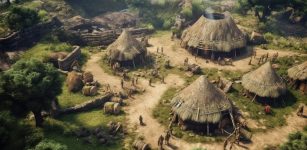 Height Differences Among Neolithic People Was Caused By Environmental Stress Not Genetics
DNA | Dec 13, 2023
Height Differences Among Neolithic People Was Caused By Environmental Stress Not Genetics
DNA | Dec 13, 2023 -
 Extraordinary 5,000-Year-Old Astronomical Event Depicted On Indian Rock Carving
Archaeoastronomy | Jan 9, 2018
Extraordinary 5,000-Year-Old Astronomical Event Depicted On Indian Rock Carving
Archaeoastronomy | Jan 9, 2018 -
 Rare 17th Century Wreck Of Dutch Fluit Ship Found In The Baltic Sea By Finnish Divers
News | Aug 25, 2020
Rare 17th Century Wreck Of Dutch Fluit Ship Found In The Baltic Sea By Finnish Divers
News | Aug 25, 2020 -
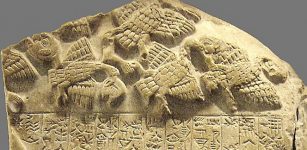 Sumerian Stele Of The Vultures: Oldest Known Historical Records Carved On Limestone
Featured Stories | Sep 1, 2016
Sumerian Stele Of The Vultures: Oldest Known Historical Records Carved On Limestone
Featured Stories | Sep 1, 2016 -
 On This Day In History: Planet Neptune Officially Discovered – On Sep 23, 1846
News | Sep 23, 2016
On This Day In History: Planet Neptune Officially Discovered – On Sep 23, 1846
News | Sep 23, 2016

